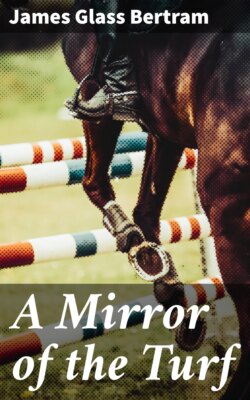Читать книгу A Mirror of the Turf - James Glass Bertram - Страница 13
На сайте Литреса книга снята с продажи.
VI.
ОглавлениеTable of Contents
The rise and progress of the Goodwood Meeting may be briefly recorded. Like Ascot, it is one of the fashionable gatherings of the season. The Duke of Richmond and Gordon, on hospitable thoughts intent, opens wide the doors of his commodious mansion; but as he can only entertain a limited number of his own personal friends, the wonder is that the stands are so crowded with spectators. The distance of Goodwood Park from London is more than twice the distance of Ascot, and yet as many persons seem to frequent the one meeting as the other; hundreds are contributed from Brighton, Portsmouth, and other towns, and hundreds go from and return to London every day of the meeting. All the towns and villages in the vicinity of Goodwood Park are crowded by the strangers who have come to assist at the meeting, Chichester, in particular, being the abiding-place of a host of visitors. The houses and cottages round about fill with lodgers, and country seats are crowded with guests, all eager to take part in the brilliant scene which, in fine weather, is worth making a day's journey to see.
The annual meeting in the Duke of Richmond's park forms a fine theme for the pen of the descriptive reporter, and has been "gushed" over, in certain of the daily newspapers, in "a perfect paroxysm of word-painting phrases" during the last twenty years on each succeeding anniversary of the race. Nor is the work of the "Economist," who translated the silks and satins of the toilettes of "England's fairest daughters" into vulgar money's worth, to be ignored. His estimate that the dresses and "other belongings" of the four hundred and fifty most fashionable women, from their dainty morocco shoes and silken sandals, up to the wondrous head fabrics which crowned the high-born, delicate ladies seen at the two great fashionable meetings of the season, would cost at the least £200 for each person, is, perhaps, even too moderate; the total cost of the toilettes of that army of the fair would, perhaps, on the average of the Goodwood season, be full a £100,000. Was it not, for instance, recorded by the public press in a scandal case, that the Ascot and Goodwood trousseau of one fair but frail dame, of twelve dresses and the accordant "other things" of shoes, fans, gloves, lace and lingerie, had been charged £1,128? The "Economist's" argument is that horse-racing, despite its evils, must be tolerated for the good it does to trade, for the crowds it sends over the railways, for the gospel of eating, drinking, and dressing which it so eloquently preaches, all employing tradespeople, and, consequently, circulating money.
Coming to the facts connected with the institution of the Goodwood Meeting, it has to be stated on the authority of various historians, that the meeting was founded in a sportive moment by some officers of the Sussex Militia, in conjunction with the members of a local hunt club. The races so organised first took place in the course of the month of April, 1802, a good beginning being made with a purse of £613, little more than the half of which was public money, the sweepstakes entered for amounting to £300.
The meeting was in every respect a successful one, and was continued in 1803 and 1804, but with less popularity, the subscription having fallen off to a very serious extent. In 1810, there were but two days of sport, the money run for being a little over £200. Nor up till the year 1827 was there much improvement; till 1825 the public money subscribed did not total up to a large sum, it varied from £80 to £300, whilst the money received as sweepstakes amounted to something between £60 and £600. Two years later, as has been stated, a great improvement began in the financial resources of the meeting, as was obvious enough from the amount of money which was run for, the total sum in that year exceeding £2,000. In 1829 the racecourse was altered and improved, and the amount of cash expended in the shape of stakes was £3,285. The year following the new grand stand was opened; and in 1831 the Royal purse of 100 gs. was procured to be annually run for.
From this period Goodwood races made great progress; and between the years 1832 and 1835, the average annual amount of the stakes contested for was £6,000. In 1837 the amount had increased to £11,145; and what with the large sum of money spent upon improvements by the Duke of Richmond, and the personal exertions and good management of the late Lord George Bentinck, this meeting made such wonderful progress, that in time it not only rivalled, but even eclipsed many of the other principal meetings.
In 1845, the value of the stakes run for amounted to the large sum of £24,909, a substantial proof that the title of Princely Goodwood was not misapplied. These races, however, fell off somewhat after Lord George Bentinck's death, but yet rank in the first class.
Ascot and Goodwood have been dwelt upon at some length, when compared with the few pages devoted to Epsom and Doncaster; but in the case of these meetings, a considerable portion of space has of necessity been devoted to the Derby and St. Leger, which helps to make an even balance.
